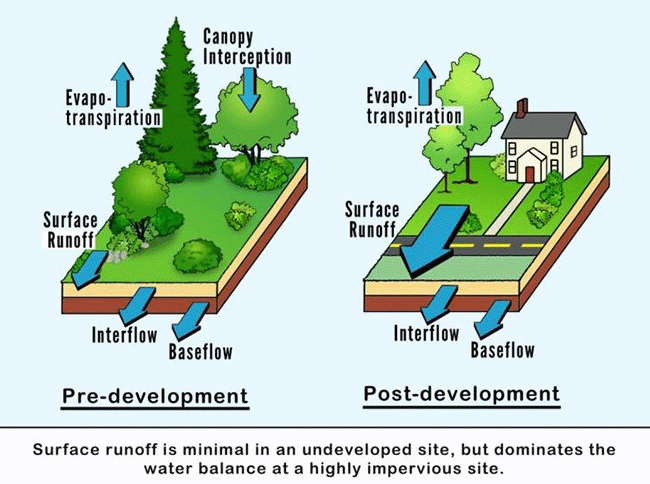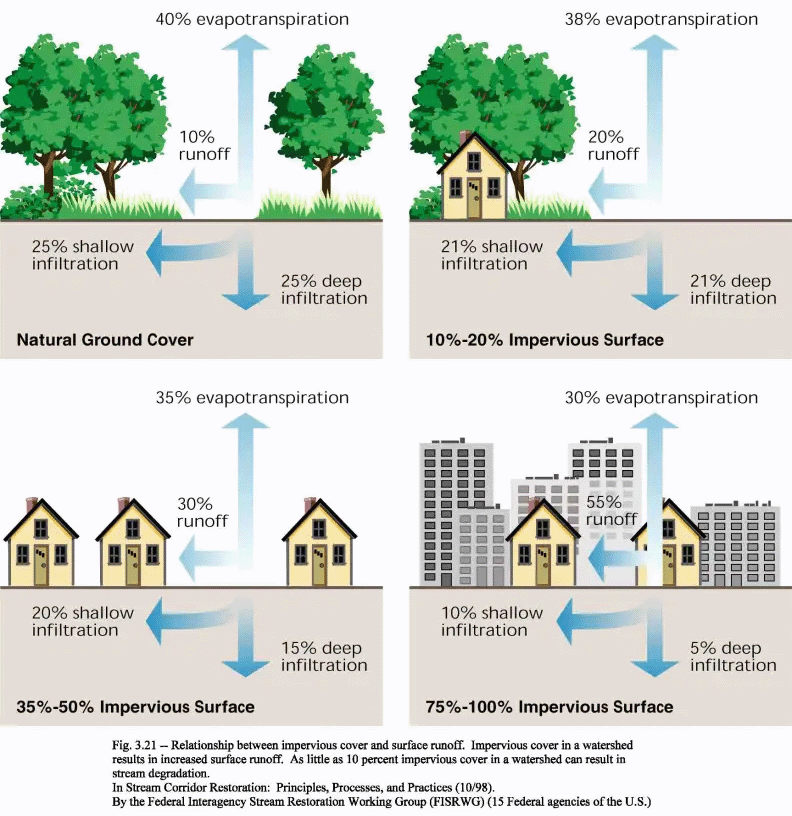Add Impervious Surfaces to a Residential Lot
Some residential subdivisions and lots have limitations on the amount of impervious surface or built-upon area. The following resources describe what impervious surfaces and built-upon areas are, why it matters, and how a property owner can increase the amount of impervious surfaces and built-upon area on his/her property.
A homeowner Lot Level Stormwater Permit is ONLY required when a building permit is required.
What is a Built-Upon Area (BUA)?
BUA is built-upon area, which means the same as "impervious surface". Most individual lots in a single-family residential development have a maximum BUA allowed per lot. You can find this limit either on the development plat or the development covenants.
BUA is an impervious surface and partially impervious surface to the extent that the partially impervious surface does not allow water to infiltrate through the surface and into the subsoil, as defined in G.S. 143.214.7.

"Built-upon area" does not include
- a slatted deck;
- the water area of a swimming pool;
- a surface of number 57 stone, as designated by the American Society for Testing and Materials, laid at least four inches thick over a geotextile fabric;
- a trail as defined in G.S. 113A-85 that is either unpaved or paved as long as the pavement is porous with a hydraulic conductivity greater than 0.001 centimeters per second (1.41 inches per hour);
- landscaping material, including, but not limited to, gravel, mulch, sand, and vegetation, placed on areas that receive pedestrian or bicycle traffic or on portions of driveways and parking areas that will not be compacted by the weight of a vehicle, such as the area between sections of pavement that support the weight of a vehicle;
- Artificial turf, manufactured to allow water to drain through the backing of the turf, and installed according to the manufacturer's specifications over a pervious surface.

A homeowner wanting to add BUA to their lot should take the following steps
- Check the maximum BUA limit on the plat or in the covenants for the development.
- Measure the BUA on the lot to determine the existing BUA. A survey is the most accurate method to determine the existing BUA.
- Measure out the proposed BUA addition that is desired, and modify the amount if BUA if needed to keep it under the maximum BUA limit for the lot.
BUA Lot Level Impervious Limits
- Lot Level Impervious Limit Overages Policy for Homeowner Additions
- Lot Level Impervious Limit Overages Policy for Homebuilders/New Home Construction
Need a Building Permit?
If the BUA addition requires a building permit, a site plan will be required. A site plan and a Homeowner Lot Level Stormwater Permit will be required if the maximum BUA limit is being exceeded.
The County has developed a guidance manual that provides more detailed information on the submittal requirements for the Homeowner Lot Level Stormwater Permit.
Related Links
Page last updated: June 5, 2025
